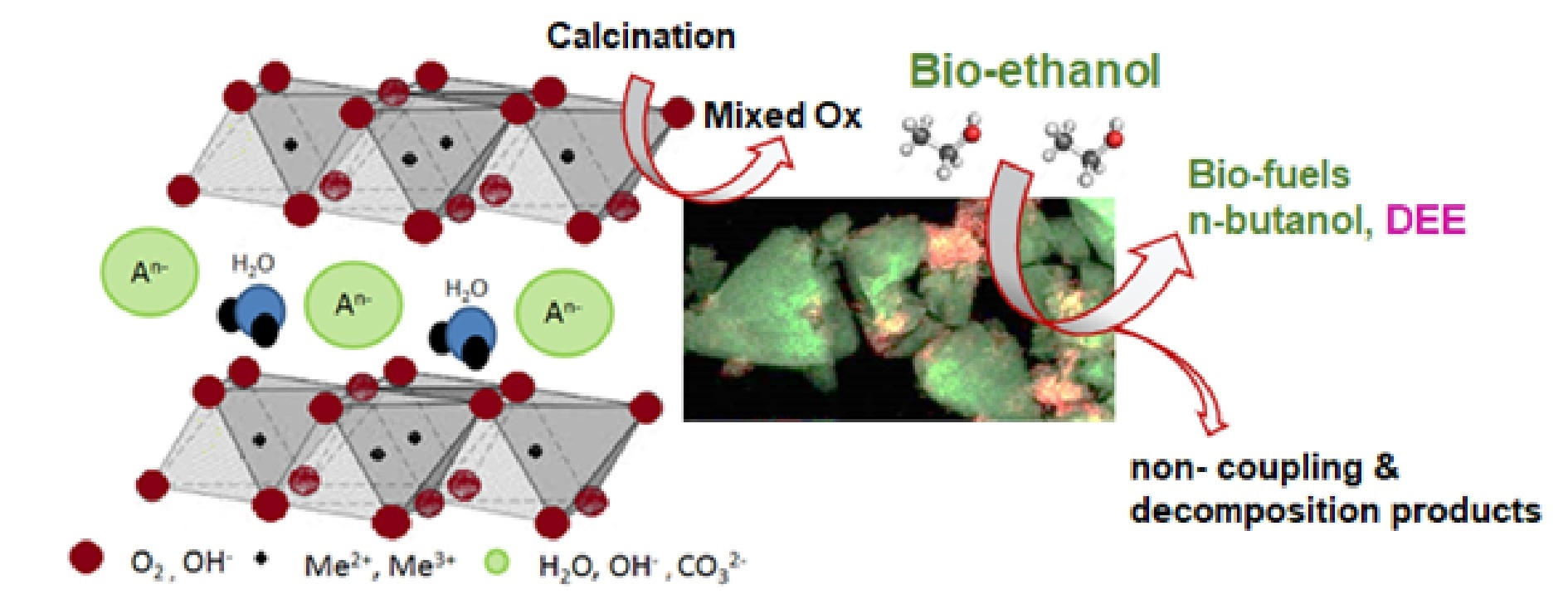Bio-DEE Synthesis and Dehydrogenation Coupling ofBio-Ethanol to Bio-Butanol over Multicompon ent Mixed Metal Oxide Catalysts
Izabela S. Pieta , Alicja Michalik, Elka Kraleva, Dusan Mrdenovic, Alicja Sek, Ewa Wahaczyk, Agnieszka Lewalska-Graczyk, Mikolaj Krysa, Anna Sroka-Bartnicka, Piotr Pieta, Robert Nowakowski, Agata Lew and Ewa M. Serwicka
Catalysts 2021, 11, 660
Abstract
 Within the Waste2Fuel project, innovative, high-performance, and cost-effective fuel production methods from municipal solid wastes (MSWs) are sought for application as energy carriers or direct drop-in fuels/chemicals in the near-future low-carbon power generation systems and internal combustion engines. Among the studied energy vectors, C1-C2 alcohols and ethers are mainly addressed. This study presents a potential bio-derived ethanol oxidative coupling in the gas phase in multicomponent systems derived from hydrotalcite-containing precursors. The reaction of alcohol coupling to ethers has great importance due to their uses in different fields. The samples have been synthesized by the co-precipitation method via layered double hydroxide (LDH) material synthesis, with a controlled pH, where the M(II)/M(III) ≈ 0.35. The chemical composition and topology of the sample surface play essential roles in catalyst activity and product distribution. The multiple redox couples Ni2+/Ni3+, Cr2+/Cr3+, Mn2+/Mn3+, and the oxygen-vacant sites were considered as the main active sites. The introduction of Cr (Cr3+/Cr4+) and Mn (Mn3+/Mn4+) into the crystal lattice could enhance the number of oxygen vacancies and affect the acid/base properties of derived mixed oxides, which are considered as crucial parameters for process selectivity towards bio-DEE and bio-butanol, preventing long CH chain formation and coke deposition at the same time.
Within the Waste2Fuel project, innovative, high-performance, and cost-effective fuel production methods from municipal solid wastes (MSWs) are sought for application as energy carriers or direct drop-in fuels/chemicals in the near-future low-carbon power generation systems and internal combustion engines. Among the studied energy vectors, C1-C2 alcohols and ethers are mainly addressed. This study presents a potential bio-derived ethanol oxidative coupling in the gas phase in multicomponent systems derived from hydrotalcite-containing precursors. The reaction of alcohol coupling to ethers has great importance due to their uses in different fields. The samples have been synthesized by the co-precipitation method via layered double hydroxide (LDH) material synthesis, with a controlled pH, where the M(II)/M(III) ≈ 0.35. The chemical composition and topology of the sample surface play essential roles in catalyst activity and product distribution. The multiple redox couples Ni2+/Ni3+, Cr2+/Cr3+, Mn2+/Mn3+, and the oxygen-vacant sites were considered as the main active sites. The introduction of Cr (Cr3+/Cr4+) and Mn (Mn3+/Mn4+) into the crystal lattice could enhance the number of oxygen vacancies and affect the acid/base properties of derived mixed oxides, which are considered as crucial parameters for process selectivity towards bio-DEE and bio-butanol, preventing long CH chain formation and coke deposition at the same time.



